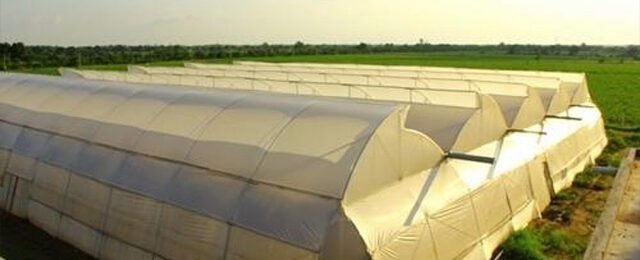Polyhouse farming in India
Poly farming is essentially an outsized greenhouse that uses glass & plastic poly film walls. In Addition, aluminium siding and sheeting, or netting instead of glass and plastic film.
Greenhouse VS Polyhouse –
One major difference between Polyhouse and greenhouse is their quality and build.
1. When it comes to durability, polyethylene plastic is more durable than glass or PVC.
2. Polyethylene plastic doesn’t crack or break as easily as glass. And it also lasts longer than traditional greenhouse frames.
3. A greenhouse is traditionally made of glass panels
Advantages of Polyhouse Farming
Crop Advantages
● You can grow off-season crops. Such crops can yield higher profits as they are in increased demand with little supply.
● You can enjoy a whole year yield of crops without having to wait for the season’s rotations.
● As you are controlling the factors like humidity, temperature, and sunlight, etc. There are very few chances of crop damage and loss.
● A drip irrigation system provides an effective solution for the scarcity of water supply. It is
also more beneficial for crop growth.
Subsidiary and Cost Advantages
● You can acquire a much greater yield by utilizing less space. As an estimate there can be an increase of 7-13% for different crops.
● Polyhouses need very little manual work which decreases the manpower require per crop, this can also help you cut down on expenses.
Quality and Quantity Advantages
● There is more control over pests and insects are your crops are less prone to lose due to them.
● The quality of the crop is relatively much higher.
● External environmental factors have little or no effect on the crops. Crops have a more favorable environment available for growth which eventually translates into higher profits.
● Fertilizer application becomes much easier, you can even use automated systems to makes sure each plant is getting a definite amount of fertilizer for optimum growth.
● Reduced cropping period helps farmers to get 2 or 3 corps per year.
● Polyhouse can have more efficient drainage and aeration mechanisms.
● More production of CO2 in a polyhouse is useful for plant growth.
Conclusion
If invested properly and managed well, these polyhouses can become next big markets. They
provide a convenient and more controlled way of farming so consequently; they have relatively low risk as compared to traditional farming. The need is to focus on training farmers to changes their traditional ways which will not only help them yield higher profits but will also boost up our economy. If utilized properly, polyhouse farming can get us enough yield to boost our agricultural exports.







